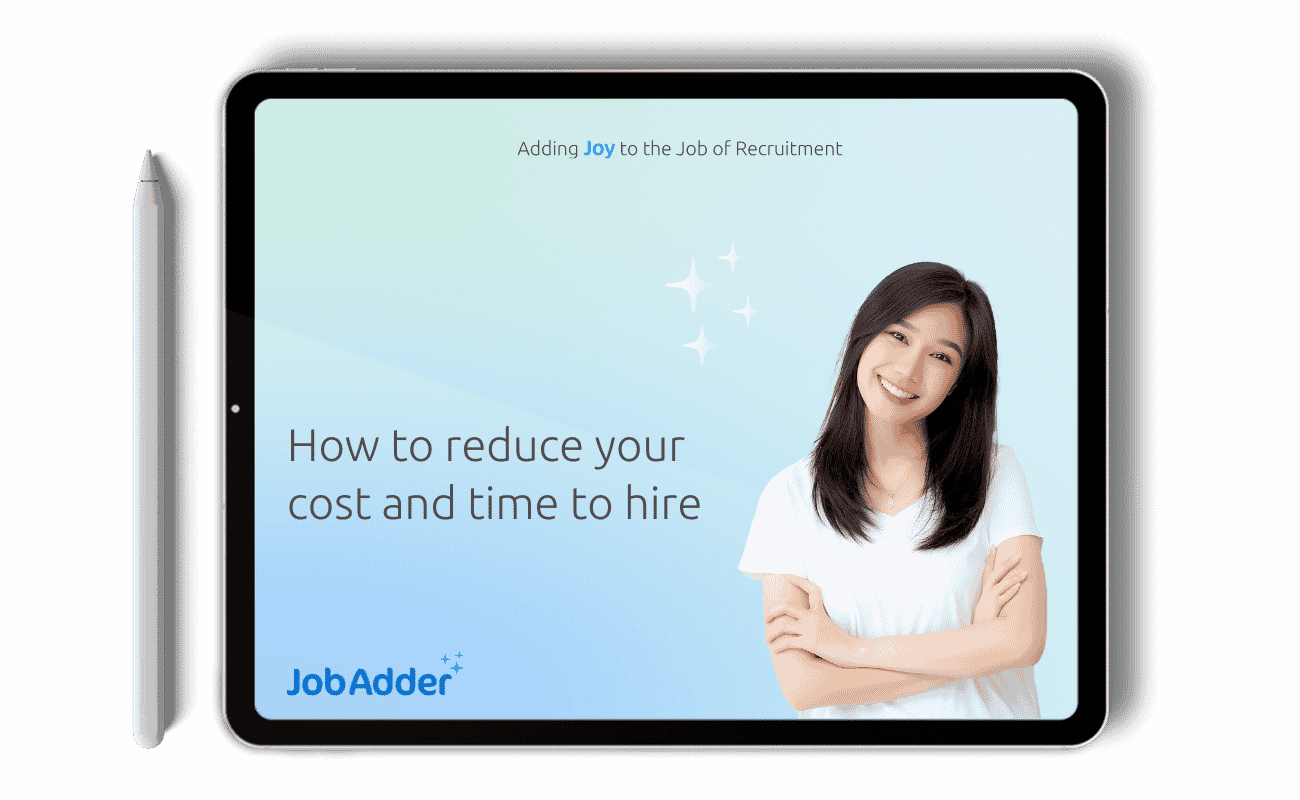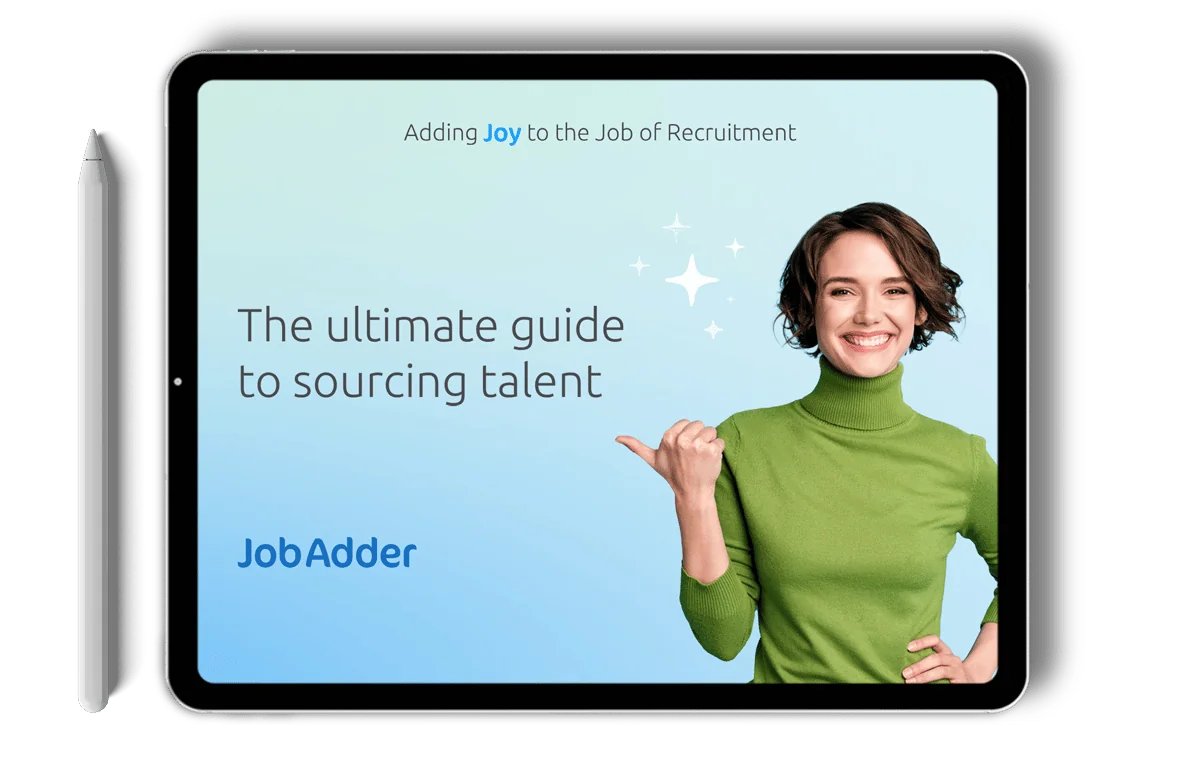When Hays released its fifth Global Skills Index earlier this year, it confirmed what recruiters already suspected; it’s harder to secure the right talent now than it was a year ago.
The job market now presents a scenario where around 72.8% of recruiters are encountering difficulties in locating suitable candidates. Notably, 45% of employers express concerns regarding the availability of employees equipped with the necessary skills. This underscores the increasing importance of establishing a talent pool.
Recruiters and companies are increasingly using talent pools but what do you need to know prior to setting one up? Here, we have your questions answered.
FREE DOWNLOAD: The ultimate guide to sourcing talent
What is the definition of a talent pool?
A talent pool functions as a reservoir of potential candidates showing interest in an organization, spotlighting individuals recognized as valuable prospects for future opportunities, even if not currently up for specific roles. This targeted grouping encompasses a range of candidates, categorized by expertise or educational timelines.
Talent pools offer a refined approach to candidate sourcing, covering candidates directly sourced, former finalists in your hiring process, and leads from various sources. Recognizing that only 30% of the workforce are active job seekers, tapping into both active and passive candidates is vital, as 87% of this combined group remains open to new job possibilities.
By building and sustaining these talent pools, organizations can enhance their candidate discovery process, potentially shortening the time-to-hire duration. A dynamic talent pool consistently engages with prospects, updates information, and introduces fresh, diverse talent into the mix for improved recruitment outcomes.
The benefits of talent pooling
By using talent pools, you are ultimately choosing to use an approach that is highly focused on the candidate. When setting up a talent pool, it’s not only important to maintain the database, but it’s also important that the recruiter regularly communicates with the candidates. This ultimately creates loyalty and prolongs the potential candidate’s ongoing interest in the company.
It’s important for recruiters to have talent pools as they can stay ahead of their company’s recruitment needs, and access talent prior to publishing job postings. By recruiting in advance and building your talent pools, you could fill positions faster and easier. The benefits of having a talent pool are:
Reduce your time to hire
The first benefit of having a wide talent pool is reducing your time to fill, where the initial work of sourcing, screening, selecting and pre-qualifying candidates has already been completed.
Through AI data matching, recruiters can reduce their time to hire by sourcing suitable candidates on their database. With AI handling the administrative tasks, it allows recruiters to spend more time with people and quicken their hiring process.
A well-managed talent pool allows you to move quickly to fill a role as you have a wide selection to choose from. When an opportunity arises, you have qualified and interested candidates to choose from, which can help reduce your time to hire.
Ready to cut your cost and time to hire? Discover our top tips.

Reduce your cost per hire
Increase the money you save during the recruitment process by eliminating the need to advertise on job boards. To reduce the cost of hire, recruiters can give themselves direct access to a talent community and talent pool of willing and interested candidates, instead of having to wait for applicants to respond to a job application or advertisement.
Improve the quality of hire
According to a recent LinkedIn recruiting report, 45% of leaders in Australia say that their team’s hiring volume will increase, and 55% of Australian leaders measure success according to the length of time new hires stay at the company. Increased engagement with your talent pool means more passive candidates may be open to the possibility of changing careers.
If you look at from this perspective, no recruiter wants a low-quality hire, especially when a majority of the time why such candidates are selected, is due to not having enough time to source quality candidates, not enough time to check if candidates fit the role and the lack of quality candidates available. According to 65% of recruiters, the lack of skilled candidates in the market is cited as the largest obstacle to hiring.
By creating and managing an effective talent pool it can help recruiters avoid hiring a low-quality candidate by providing a steady flow of qualified applicants; essentially improving your quality of hire and acceptance rate.
Need help building your talent pool? Download our ultimate guide to sourcing talent.

The power of recruitment software
You’ve now learned about talent pools, why it’s important for you and how it can improve your recruitment process. But now you have to actually create and manage your talent pool. Building and maintaining your talent pools is hard work, but with the appropriate recruitment software your job is easier.
Streamlining talent pool creation
Setting up your talent pools should be created systematically with help from the right recruitment software. The chosen software should help recruiters create and build talent pools with consistently engaged passive candidates. Recruitment software should attract, engage and hire the best talent to grow your organisation through a careers page, employee referrals, job board advertising and social media recruitment. By using the right recruitment software, it can further create better working relationships by building talent pools and shifting the way recruiters work with strategic candidate pipelining.
Within your recruitment software, stronger relationships build better outcomes with a powerful Recruitment CRM. Companies can engage with passive candidates long before they apply. With job fill time saved by 30%, JobAdder allows you to gain insight and visibility into your talent pipeline so you can plan talent attraction strategies, and can react quickly if you experience unforeseen demand for new employees.
The tools to build and fill effective talent pools
Sourcing tools are one of the more common methods in building talent pools, where these tools search for candidates and their profiles through web-based specific keywords.
Candidate sourcing refers to the task of a recruiter in finding, assessing and engaging the most suitable candidate for a given role. Sourcing candidates can include a variety of measures. Strategies for sourcing candidates vary from recruiter to recruiter and what may work for one role can be ineffective for another. The primary goal of sourcing is to collect the relevant data about qualified candidates, such as names, titles and job responsibilities.
Such sourcing tools further inform passive candidates about open roles and focus on building relationships for future opportunities. Such sourcing tools include the following:
Employee referrals
Source great talent and build your talent pools more effectively through employee referrals. According to LinkedIn, organisations can expand their talent pool 10x by recruiting through their employees’ networks. By tapping into this resource your employees can help you discover a hidden gem. Furthermore, employee referrals are a top source of quality hires along with social networks and internet job boards.
Re-engage with unsuccessful candidates
On average, each corporate job offer attracts 250 resumes. With unsuccessful candidates, an expected handful would be sufficient enough to be added to your talent pool. In most cases, you would have invested some time with these candidates and written notes on why they were not successful. See if you can make use of these applicants by segmenting them into your talent pools, and re-engaging with your silver medalists for future job openings.
Talent is more likely to consider your company for a future opportunity when you offer them constructive feedback, but only 41% of talent have actually received feedback. By offering this to unsuccessful candidates who showed potential, it could increase your response rate and time to hire if you approach these applicants in the future.
Inbound recruiting
Attracting candidates to willingly join your talent pool can be done through valuable content that attracts applicants to your company. This could include a blog where your organisation posts articles on upcoming projects on their career site, as well as company culture videos and employee testimonials.
By providing such content you could further add a landing page on your career site that will serve as an invitation to join your talent pool. Explain what they can gain by joining as well as providing them with instructions on how to become a member of your talent community.
Consider offering candidates with an ‘expression of interest’ application, as this is another method of inbound recruiting you could implement. But be mindful that this method may not work for all recruiters and organisations. Canva’s Lead Recruiter Scott Crowe believes that an expression of interest doesn’t necessarily work. “Not many people are hired via this path as they usually don’t possess the skill sets we’re looking for,” he said. In fact, Crowe thinks it’s quite “a significant time investment for the outcome.”
In comparison, Fiona Gallacher, Recruitment Manager from Edmen Community Staffing Solutions, encourages candidates to use their expression of interest, as “it has given us some applicants that we may not ordinarily have been able to contact,” Fiona said. “At this stage, we are still collating the data but the pick up looks promising,” she added.
Social media campaigns
Social media sites are becoming a common recruitment tool with at least 84% of companies currently using social media for recruitment, and 9% of those who are not using it is actually planning to.
With social recruitment, you can reach passive candidates, showcase your company culture and improve your employer branding and ultimately build a more personal connection with candidates. The aim of social media campaigns is to invite candidates to be a part of a talent pool. As social professional networks are the number one source of quality hires, followed by internet job boards and employee referrals, social media campaigns can help grow and strengthen your employer branding.
Building and managing successful talent pools is one of the first steps to improving your recruitment process and takes time and effort. Rome wasn’t built in a day and your talent pool won’t be either. In the grand scheme of things, talent pools can help you cut down on recruitment costs, time to hire and build better relationships and improved engagement with your candidates. Segment your pools gradually and soon you will witness great results not only with quality candidates that are sourced but with making better hiring decisions.
Frequently asked questions
What is the difference between talent pipeline and talent pools?
Talent pipeline refers to a broader term that encompasses various stages of the recruitment process, from initial awareness to the final hiring decision. It includes potential candidates at different stages of engagement.
On the other hand, a talent pool focuses on a specific group of pre-qualified and interested candidates, nurturing relationships with them for future job openings. Talent pools are more targeted and can lead to quicker and more effective placements.
How do you build a talent pool?
Building a talent pool involves strategic steps such as identifying your organization’s future needs, defining desired competencies, and utilising various recruiting strategies. Engage with both active and passive job candidates through a user-friendly application process, meaningful candidate experience, and data-driven assessments.
Leverage your current employees as potential sources for referrals. Regularly update and maintain your talent pool, utilising templates to organise candidate information for efficient talent management.
What is the difference between talent pool and succession pool?
A talent pool primarily focuses on creating a diverse pool of potential candidates for various open positions and future vacancies. It’s about having a group of high-quality individuals with various skills and competencies that can be tapped into when needed. A succession pool, on the other hand, is more specific and concentrates on identifying and grooming internal candidates to fill key leadership or critical roles within the organisation. Succession pools focus on addressing skills gaps and promoting retention among current employees.
How do I diversify my talent pool?
To diversify your talent pool, embrace a data-driven and inclusive approach. Implement practices for diversity, equity, and inclusion (DE&I) by targeting underrepresented groups, ensuring unbiased assessments, and creating a welcoming candidate experience.
Collaborate with relevant networks and organizations to tap into a wider candidate pool. By actively addressing diversity, you can attract a broader range of great candidates and enhance your talent acquisition strategy.
What are the disadvantages of talent pools?
While talent pools offer several benefits, there are potential disadvantages. Maintaining a large talent pool can be time-consuming and resource-intensive. If not managed effectively, talent pools can become outdated, leading to inaccurate candidate information.
There’s also a risk of overlooking fresh talent in favour of candidates who have been in the pool for a long time. Striking the right balance between engaging with existing candidates and exploring new options is crucial to prevent stagnation in your recruitment efforts.
Start building diverse talent pools with JobAdder recruitment software
JobAdder’s ATS and CRM is strategically crafted to empower you in building and nurturing talent pools, infusing ease into the recruitment journey while guaranteeing access to exceptional candidates for your organisation. From automated job posting on over 200 job boards to utilising AI for skill-based candidate matching, it serves as a centralised hub for all communication. Additionally, it streamlines interview scheduling, facilitates collaborative notes sharing and offers a range of integrations for sourcing, reference checking, billing, onboarding and more. Request a demo today.




